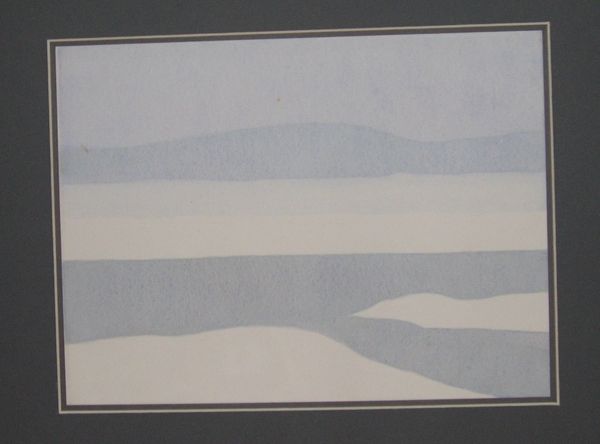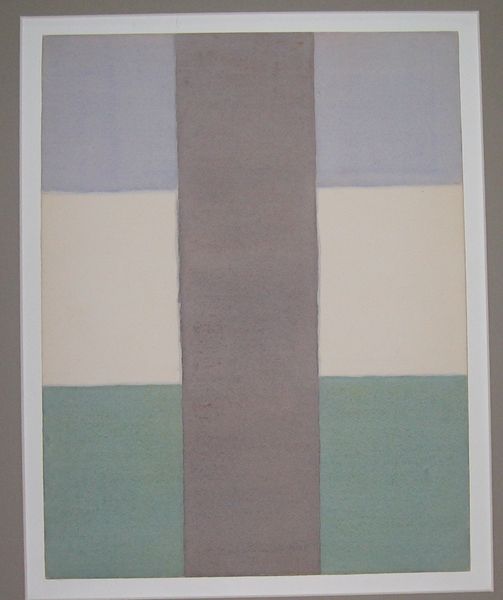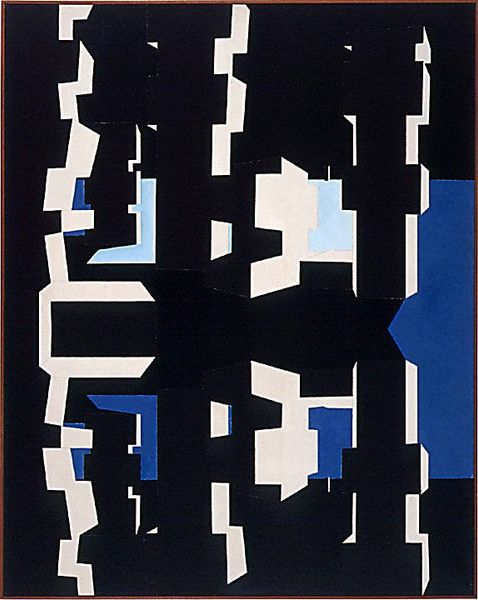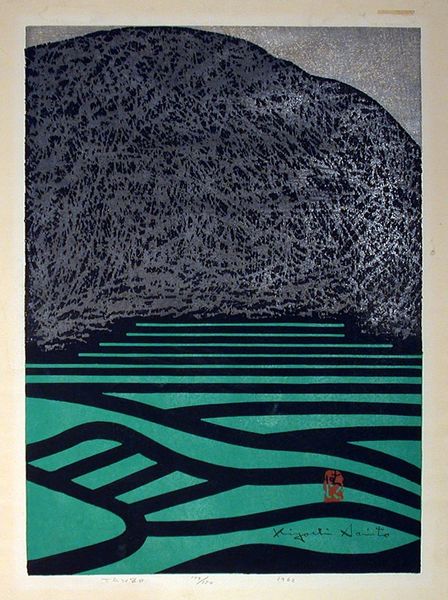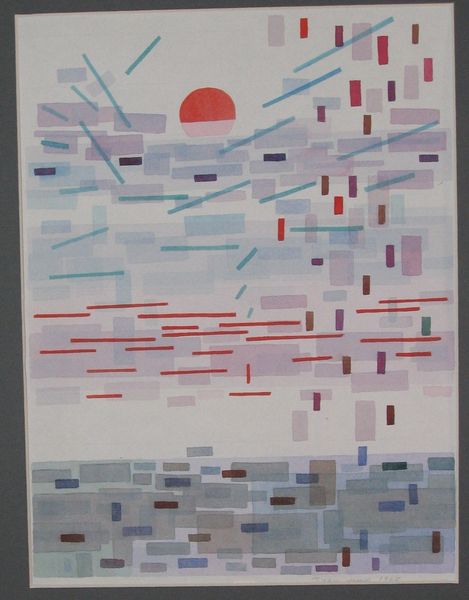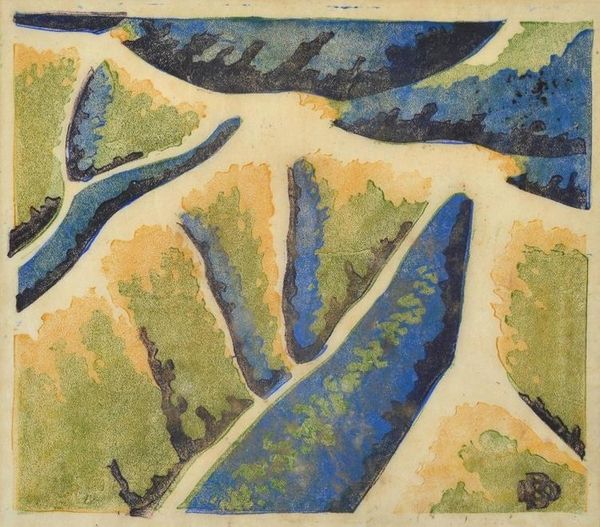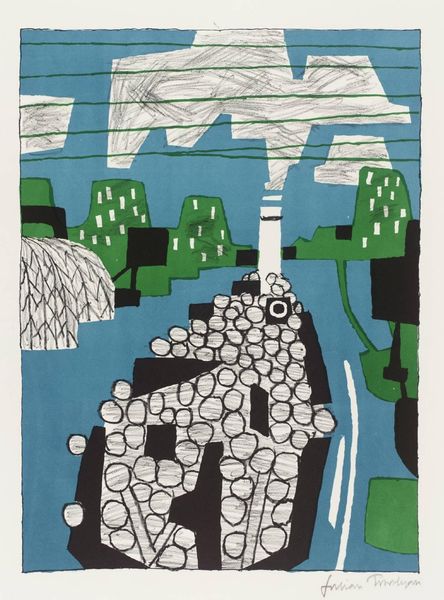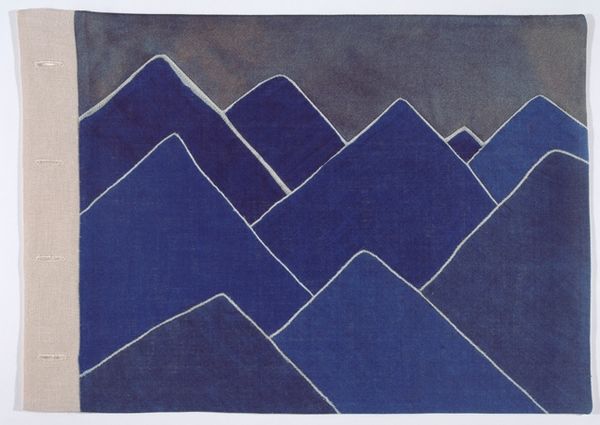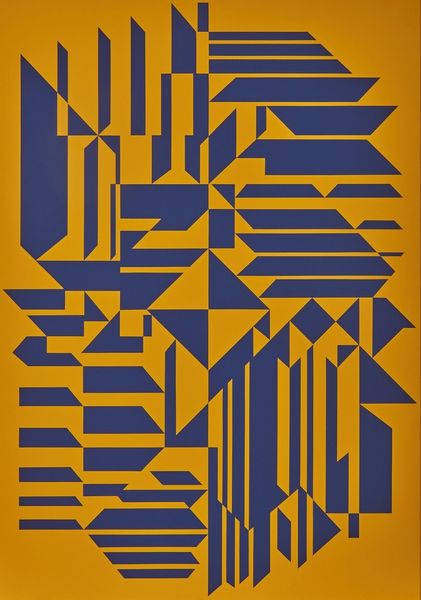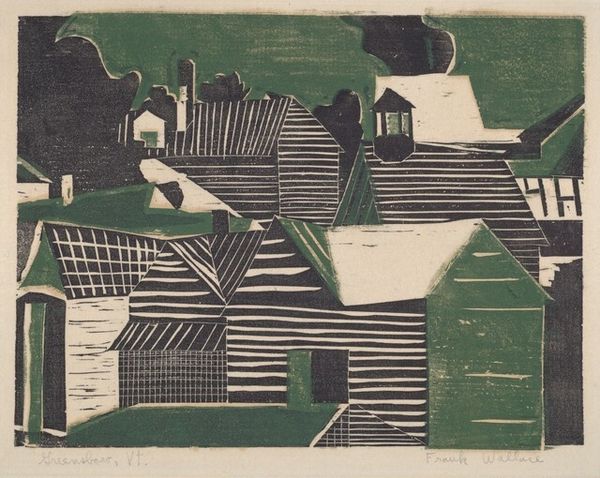
Illustration to the collection of poems by M. Bazhan 'Legacy' 1978
0:00
0:00
hryhoriihavrylenko
Private Collection
Copyright: Hryhorii Havrylenko,Fair Use
Editor: This is Hryhorii Havrylenko’s "Illustration to the collection of poems by M. Bazhan 'Legacy'," created in 1978. The starkness of the black ink against the bright blue gives it a somewhat unsettling, dreamlike quality. What sort of visual legacy do you think this image leaves, so many years later? Curator: Look at the almost geometric way he renders the landscape. The repetition of those forms—rectangles of dark and light—resonates with me on a symbolic level. It makes me think of humanity's ongoing effort to categorize and control nature. How does it resonate with you? Does this calculated geometry evoke other cultural landscapes or images? Editor: I guess it reminds me a bit of minimalist posters or even circuit boards, especially the little rectangles that seem to mimic computer components. Curator: Yes, exactly! Consider the title—"Legacy." Does this visual language, the symbolic organization of natural space, hint at what Bazhan's poems might explore? Think about the visual weight: dark land versus reflective sea, artificial versus the organic. Editor: That’s interesting. It makes me wonder if the “Legacy” is about our impact on nature, or perhaps a reflection on the tension between industry and the environment. Curator: Precisely! Havrylenko presents us with an image that is simple on the surface, but layered with encoded ideas. What seemed stark to you initially is actually quite thought-provoking. How does the use of negative space contribute to that complexity? Editor: I see it now – the negative space allows your mind to fill in the gaps and connect the different shapes, drawing parallels and forming interpretations that wouldn’t be apparent at first glance. It almost asks the viewer to co-create meaning. Curator: Exactly. This shows us that sometimes the simplest imagery carries the deepest symbolic and cultural weight. A fitting legacy, wouldn't you agree?
Comments
No comments
Be the first to comment and join the conversation on the ultimate creative platform.

